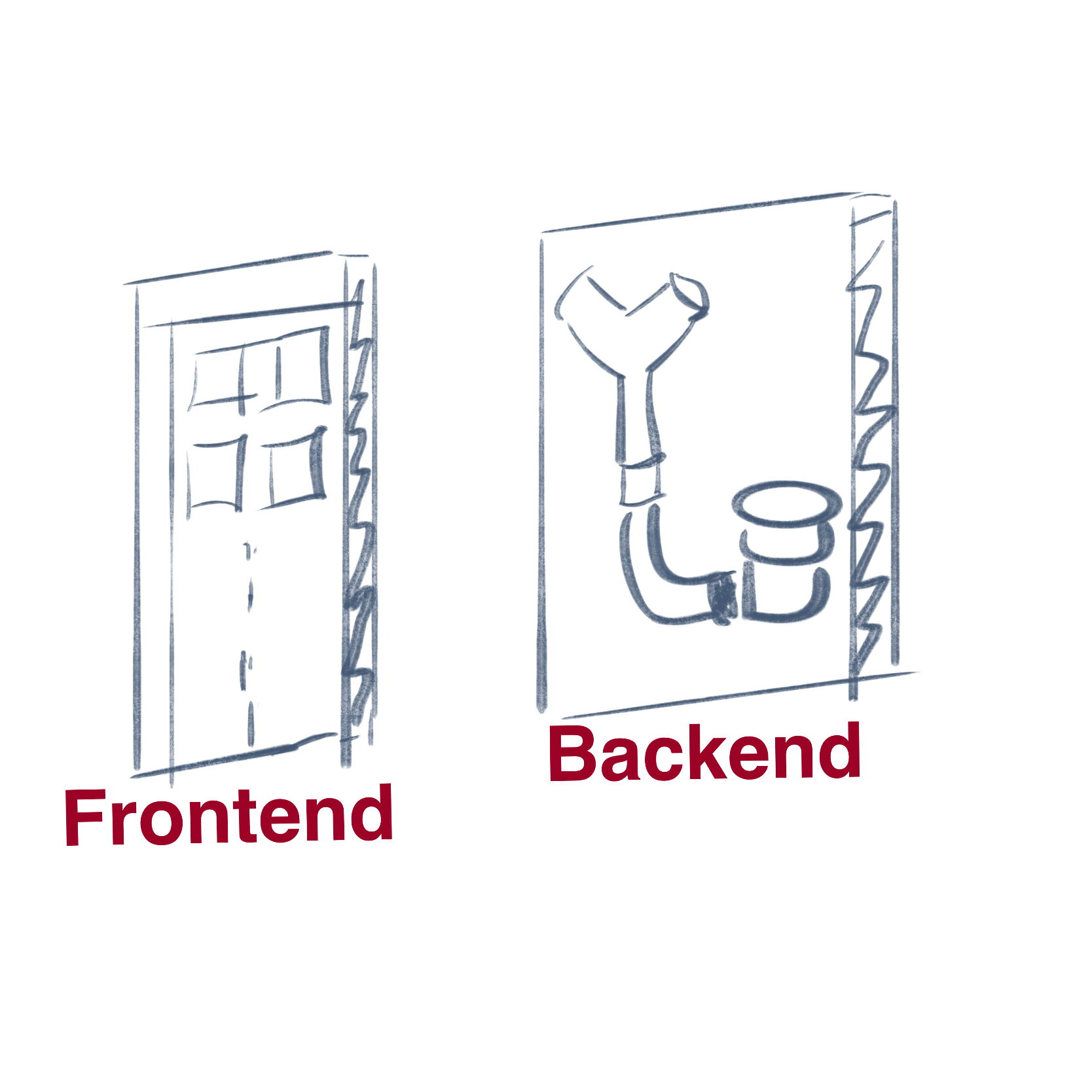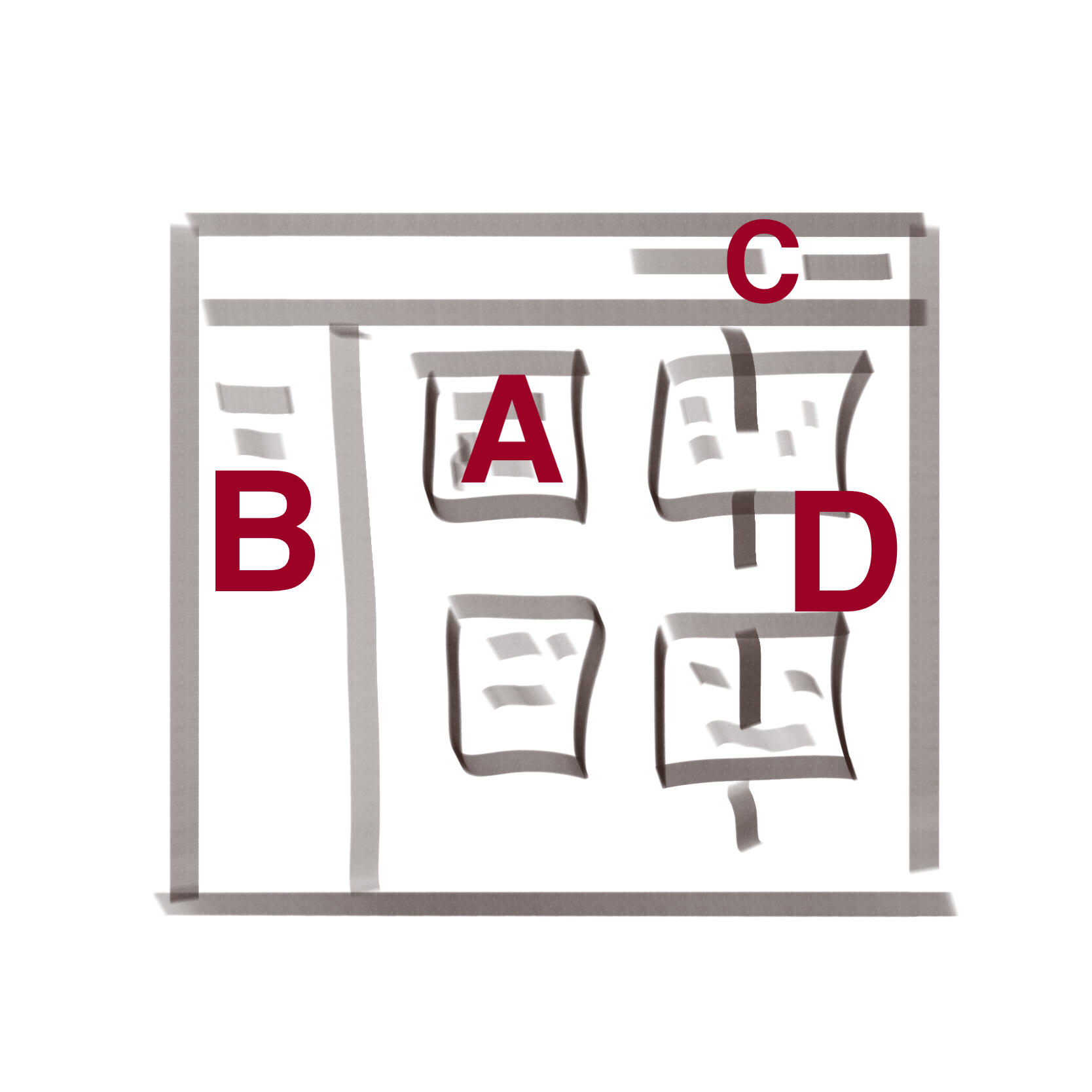Break apart your features into full-stack slices
I often see people split work into horizontal slices. Ticket A: database tables and models. Ticket B: controllers. Ticket C: front-end.
There’s something better — split the work into full-stack slices.
The full-stack slice
Think of your feature like a stack of pancakes, where each pancake represents a layer of your system. Eat a piece of all pancakes at the same time. Don’t eat them one at a time.

That may seem unrealistic. After all, there’s usually logic that is shared by every part of the feature.
Sometimes features are more like icebergs, where a small change in one layer corresponds to a large change in a separate layer. For example, the UI may have a smaller footprint than the back-end. That’s okay. Handle more of the back-end in a ticket, but cut vertically through the iceberg. Don’t cut horizontally.

Why it’s better
-
Work iteratively. In the post agile world, everybody pretends to work in iterations. But can we ship at the end of our iteration? If we build the database and tables in one iteration, our customers don’t receive any new work. But if we ship a sliver of the full stack, they get something.
-
Discover the glue code. When working in front-end and back-end slices, we often overlook the code that ties the two slices together. And that spells trouble at the eleventh hour — an incorrect abstraction or a missed parameter, and we’re having to order pizza for dinner and work into the night. But if we build a full-stack slice, we need the glue code while building the slice. No surprises Friday night.
-
Learn quickly. When working with full-stack slices, we may find a large roadblock that forces our project in a new direction. Or we may ship a portion of our feature and receive customer feedback that changes our roadmap.
-
Stay nimble. We know one thing about the future: it will bring change. External forces change the highest priority project today into a low priority project tomorrow. If we only work on one layer of our system and priorities change, our customers will not get any part of the feature. But if we ship full-stack slices, we can change projects at the drop of a hat with minimal loss.
-
Only write the code you need. When working on the back-end in isolation from the final product, we work with incomplete information — guessing what the front-end will need. So, we over-engineer solutions that take longer to develop and create unused code paths that we must then maintain.
An example
Let’s look at an example from a recent project.
I was assigned three tickets that considered the front-end and back-end as two completely different aspects of the application:

-
Ticket X: build the back-end — controllers, models, all the functionality needed for rendering, filtering, and searching.
-
Ticket Y: build the front end — navigation, UI cards, a sidebar for filtering, and a navbar for search and a create button.
-
Ticket Z: build a sliding panel of the UI that reused a lot of back-end work.
Tickets X and Y were completely separated into front-end and back-end. The complexity of each was high, meaning I could spend a lot of time building things I assumed the other ticket would need.
Ticket Z was separate from the other two, and it was mostly front-end work since it used existing back-end functionality.
Looking from the perspective of the user
Instead of following those tickets, I looked at the UI from the perspective of the user to find pieces that could be shipped separately. That gave me four major sections with some subsections: A.1, A.2, B, C.1, C.3, and D.

-
A.1: Display the list of items. This was the first slice of the iceberg, so I included a lot of the shared logic: navigation (a user has to get to the page), the UI cards with essential information, and all the back-end work needed to render them.
-
A.2: Each card in the list had some complex interactive elements. I separated those into a new ticket. It mostly included UI work and small back-end pieces.
-
B: Filtering in the sidebar so that users could narrow down the cards they see. This was blocked by A.1.
-
C.1: Adding search that would filter the cards to the ones matching the query. Much like B, this one needed the core of A.1.
-
C.2: Creating a new item. Most of the back-end logic for this already existed. So this was a trivial UI addition.
-
D: Adding the sliding panel. In a new application, I would have made the sliding panel its own feature made of full-stack slices. Thankfully, most of the back-end was already built. So this was primarily UI work.
You can decide where to put the first slice of the iceberg that has shared logic. I put it in A.1 because it seemed like the most important part of the feature. Without it, users would not get any value from the rest.
Some of the other work — like B, C.1, and C.2 — became thin slivers of full-stack work. And that made for concise pull requests. Avoid the temptation to group those thin slivers with something else. I have seen many “simple” ancillary tasks unearth complex issues and delay the release of the core feature.
Full stack depends on your stack
You may think these lessons don’t apply to you because you build APIs or single-page applications. But it does. Full-stack is whatever your fullest stack can be.
If you build APIs, the consumers of the API are your users. And they will benefit from an endpoint that returns a list of items even before you allow them to search or filter those items.
Likewise, if you build single-page applications, splitting your front-end work into discrete portions that you can deliver separately will bring value to your users faster while keeping you nimble.
Break apart your features into full-stack slices whatever your stack.